What Causes Bathroom Ceiling Paint Peeling And How To Fix It?

DIY DOJO is reader-supported. We may earn an affiliate commission when you buy through links on our site. Find out more.
One of the most common problems in bathroom renovations is peeling paint in the ceiling. Bathroom ceilings are prone to peeling due to the high moist levels and frequent exposure to moisture. This affects the room’s appearance and can lead to mold growth, which can be dangerous to your health.
This article aims to help homeowners understand why paint on bathroom ceilings tends to peel and provide tips on how to stop bathroom ceiling paint from peeling. We will also offer the best paint and primer options for bathroom ceilings and walls.
What Causes Peeling Paint on Bathroom Ceiling
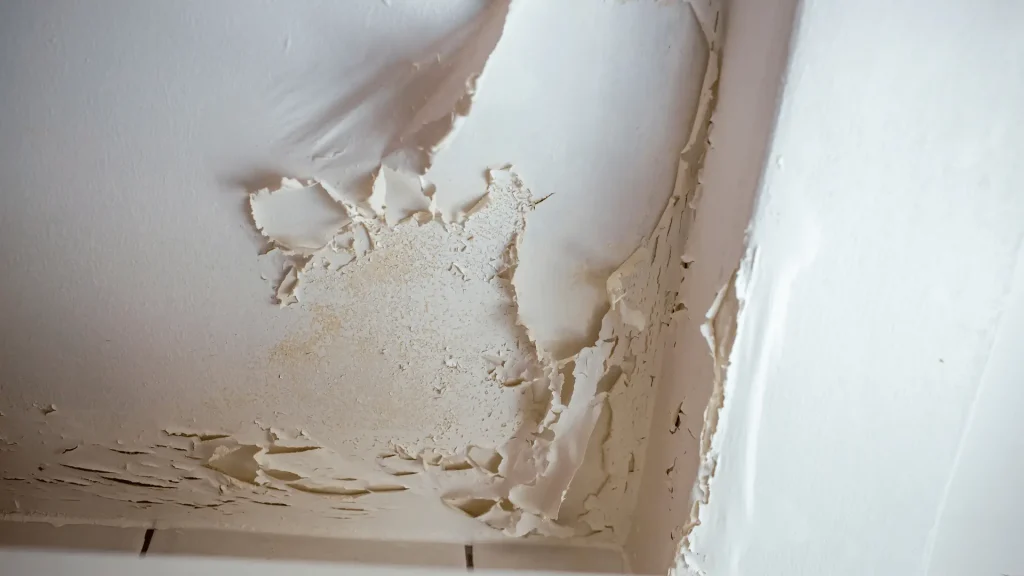
Bathroom paint peeling is due to caused by moisture in the air. This moisture can be due to poor ventilation, humidity, Poor ventilation Lack of proper preparation, condensation, Inadequate flat coat, or even leaks from the room ceiling.
Humidity:
One of the leading causes of peeling bathroom walls or ceilings is high moist levels. When bathroom ceilings are exposed to high moisture levels, the paint can become soft and begin to peel.
Poor ventilation:
Another reason for peeling paint on the bathroom ceiling area is poor ventilation in your bathroom. When there is not enough airflow in the bathroom, moisture can build up and cause the paint edges to peel.
Lack of proper preparation:
If the surface is not correctly prepared before painting, the paint may not adhere properly and can start unsightly peeling in the first place. This can include not removing aged paint, not cleaning the surface, or not applying a proper flat coat.
Old paint:
If the existing paint on the bathroom ceiling is old, it may have lost its adhesion, and the paint can peel.
Inadequate primer:
Using an inadequate flat coat can also lead to peeling. A flat coat is essential as it aids the paint in adhering to the surface and can prevent flaking. If the flat coat does not fit the surface or surroundings, it may cause the paint to flake off.
How to Stop Paint Peeling on Bathroom Ceiling
If your bathroom ceiling is starting to show signs of paint peeling, there are some steps you can take to rectify the peeling paint problem.
Clean the surface:
Before applying a new layer of paint, it’s essential to clean the surface thoroughly. Use a cleaning solution to remove any dirt, grime, and mildew that may have accumulated on the ceiling. This will help ensure the new paint will adhere properly to the surface.
Remove old peeling paint:
If there is aged paint that is peeling, it’s essential to remove peeling paint or cracked paint entirely before applying a new layer of paint on your walls. This can be done by using a paint scraper or putty knife.
Apply a new coat of primer:

After removing the old shedding, it’s essential to apply a new coat of flat coat. Choose a flat coat designed explicitly for ceilings to prevent chipped paint in the future.
Use a paint designed for ceilings:
When selecting the right type of paint for the ceiling, choose water-resistant paint explicitly designed for bathroom use. This will avert flaking and guarantee that the paint will endure.
Maintain proper ventilation and humidity levels:
To help prevent future peeling paint in the bathroom, it’s essential to maintain proper ventilation and moist levels in the bathroom. Use a fan or open the window to increase airflow and dry the bathroom.
Best Paint and Primer for Bathroom Ceiling
When painting a bathroom ceiling, you must choose the best prime and paint for the job. The best option is usually an acrylic latex paint with an oil-based flat coat for maximum adhesion and durability.
Considerations when choosing paint and primer:
When choosing paint and flat coat for the bathroom ceiling, it’s essential to consider the moisture levels in the room and the type of surface you will be painting. Look for paint and a flat coat specifically designed for bathroom use and has a good reputation for adhesion.
Water-resistant paint and primer options:
Some of the suitable types of paint and flat coat options for bathroom ceilings include:
- Zinsser Mold Killing flat coat
- Kilz Bathroom Paint
- Behr Premium Plus Ultra Water-Resistant Interior Paint
- Valspar Reserve Water-Resistant Ceiling Paint
- Sherwin-Williams SuperPaint Water-Resistant Interior Paint.
Each option is designed to fix peeling paint in a bathroom environment and can help provide a long-lasting, attractive paint finish for your ceiling.
Does the Bathroom Ceiling Need Special Paint or Primer?
Bathroom ceilings need special paint or a flat coat to protect them from moisture and mold. This is because bathrooms are highly moist, and the roof is exposed to more water than other parts of the house.
Why special paint and primer are necessary
Bathrooms are prone to high levels of dampness and moisture, which can lead to shedding and other problems. Special paint and a flat coat explicitly designed for bathroom use can help to prevent these issues and ensure a long-lasting, beautiful finish.
Benefits of using special paint and primer
Using special bathroom paint and flat coat can help prevent peeling, bubbling, and flaking and reduce the risk of mold and mildew growth. These products are formulated to withstand the moisture and dampness of the bathroom environment, providing a durable and long-lasting finish.
Tips for Preventing Bathroom Paint From Peeling
Preventing flaking paint on bathroom ceilings is essential to maintaining a safe and healthy home.
Proper preparation:
Proper preparation is critical to preventing flaking paint in the bathroom. To ensure a successful paint job, it’s essential to thoroughly clean the surface and fill any cracks or holes with a patching compound. After cleaning, apply a coat of primer designed explicitly for bathroom ceilings. This will help ensure a strong bond between the surface and the paint.
Use of ventilation fans:
Using ventilation fans is another crucial step in fixing the problem of peeling or flaking paint in the bathroom. Running a fan during and after showers can help remove excess moisture and prevent flaking. Installing an exhaust fan can also help ventilate the bathroom and reduce the risk of peeling.
Maintenance and upkeep:
To help maintain a smooth and attractive finish, it’s essential to regularly clean the bathroom ceiling and inspect for any signs of peeling or bubbling paint. If any of these issues are noticed, it’s important to quickly take care of the whole ceiling to prevent further damage. Regular cleaning can also help prevent mildew and mold growth, leading to shedding.
If you are concerned about paint fumes while repainting your bathroom ceiling to fix peeling paint, check out this article for 12 easy DIY methods to eliminate paint smell.
Conclusion
This article has discussed the causes of shedding on bathroom walls and ceilings and tips for preventing this issue. These causes include moisture, poor ventilation, improper preparation, and old paint. Additionally, it has provided steps for fixing shedding, such as removing the aged paint, applying a new coat of paint, and considering hiring a professional.
Final thoughts and recommendations:
To prevent shedding, it is essential to maintain proper humidity and ventilation levels in the bathroom. Regular cleaning and maintenance can also help to prevent shedding.
If the paint is peeling, it is essential to remove the old paint and properly prepare the surface before applying a new coat of paint. For a quality result, it may be beneficial to consider hiring a professional, mainly if the underlying causes of the shedding need to be addressed.
If you’re struggling with bathroom ceiling paint peeling due to mould, our comprehensive review of the 7 best anti-mould paints for your home in 2024 can provide a solution.
FAQs
If you want to improve your painting skills to prevent bathroom ceiling paint from peeling, check out our step-by-step DIY tutorials for painting UPVC doors and windows.

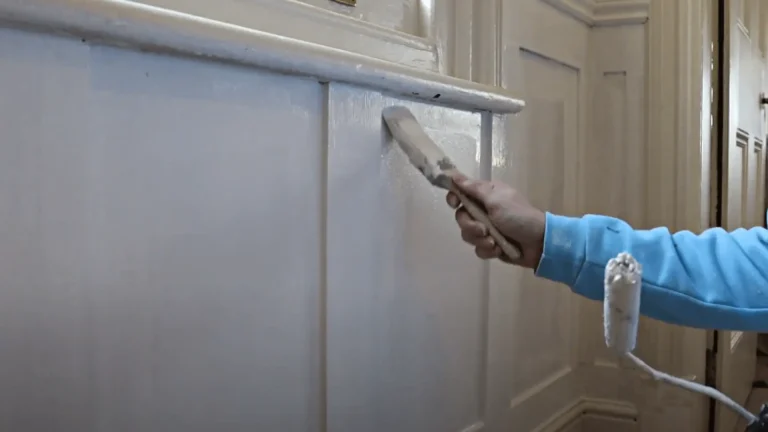
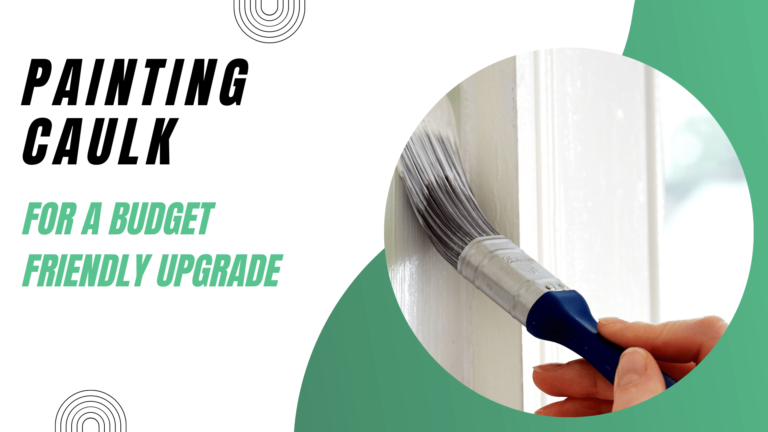
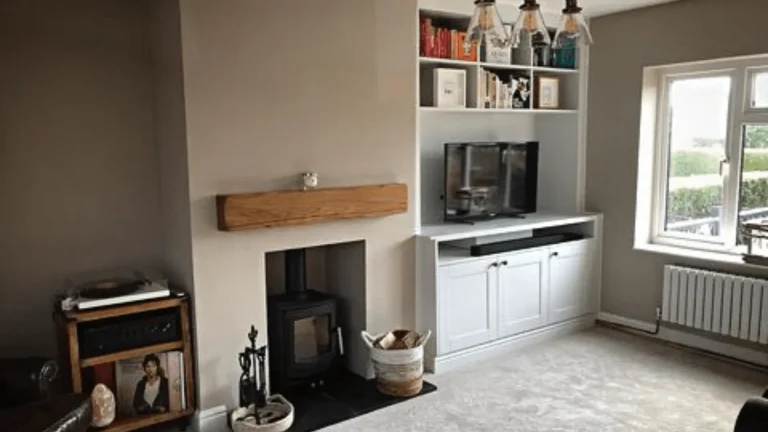
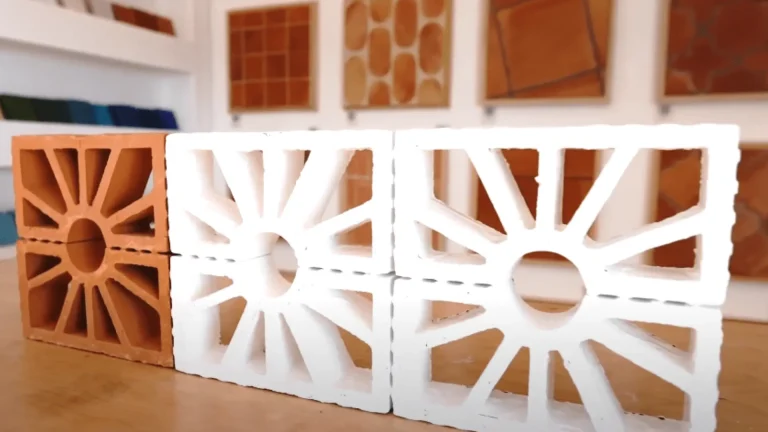


2 Comments